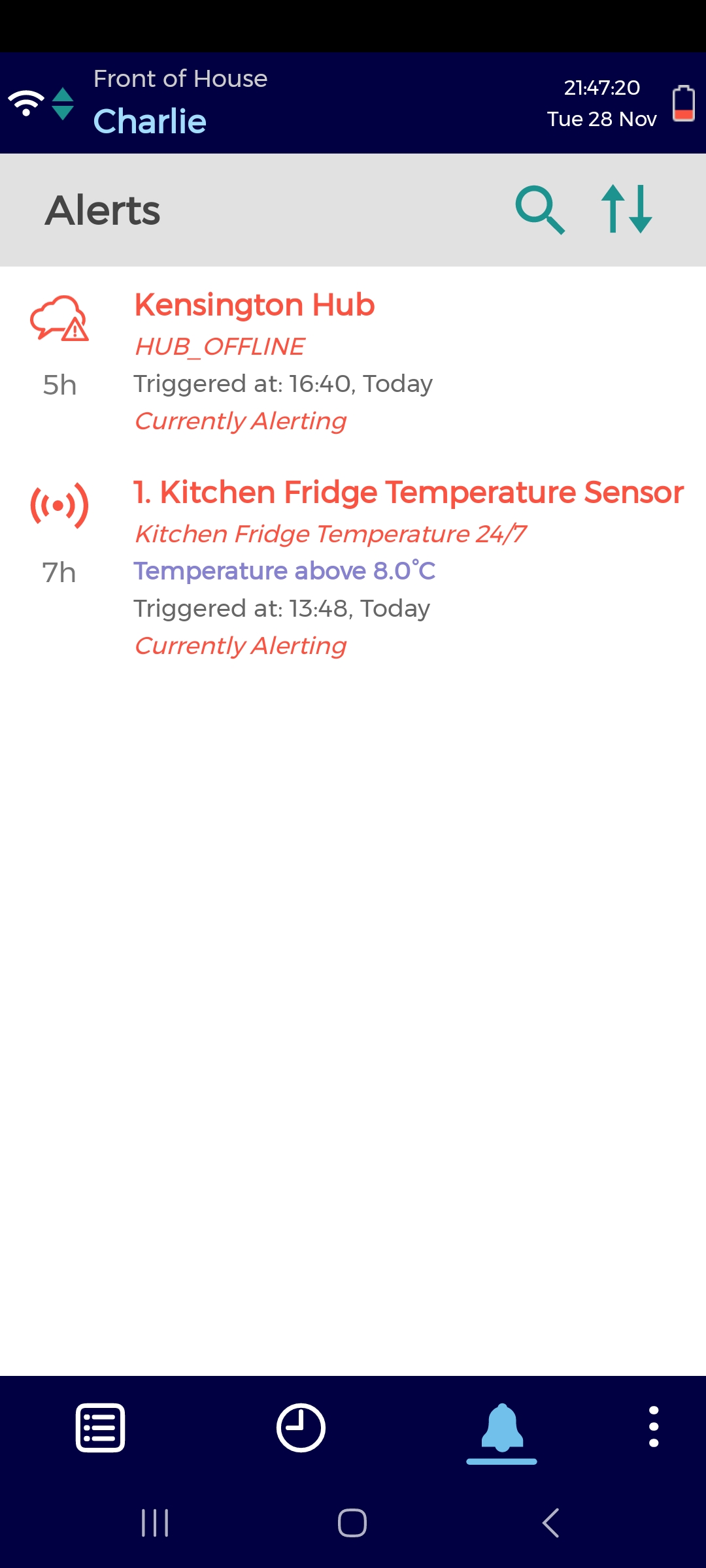Mobile Alerting
Overview
Mobile Alerting is an optional feature. Please contact us if you would like to enable it.
See Mobile Alerting Screen for instructions on how to complete an alert checklist.
If you cannot complete an alert checklist on the app, it is likely because the sensor is still out of range. A Safety Manager can override this requirement if, for example, a fridge or freezer is out of service and will not come back in range. See Force Back in Range for instructions.
Configuration
You must be a Safety Manager to create and assign checklists. See User Roles for more details.

